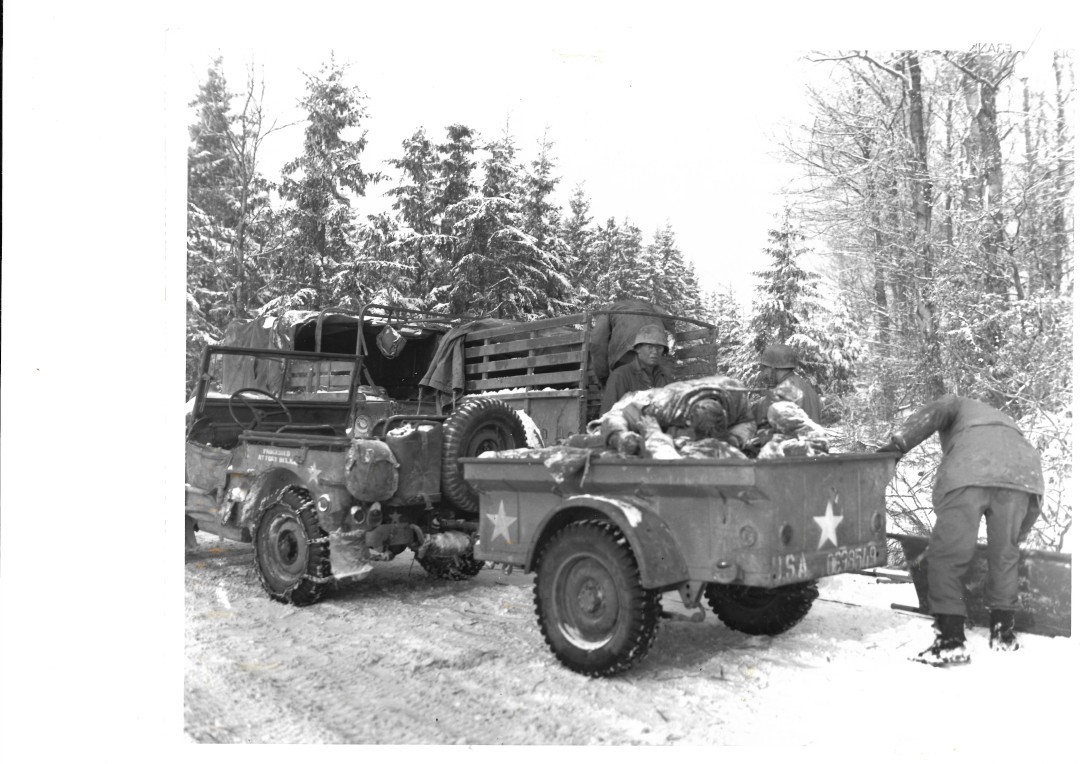By coordinating the counterattack of the 3rd US Army with the 1st US Army towards Houffalize, General Patton attempted to encircle the spearhead of the German elite units advancing towards the Meuse, with a view to capturing large parts of the retreating Western Army Group. However, the timetable for this success was extremely critical!
After its capture of Bigonville, the US 4th Armored Division (AD) was able to take full advantage of the favourable terrain for tanks on the plateau towards Bastogne, and to capture the encircled town as early as 26 December 1944.
However, the deep valleys and icy narrow advance roads of the Luxembourg Ardennes posed considerable operational challenges to his two US Infantry Divisions (ID), who initially attacked east of the corridor.
The US 26th Infantry Division had the task of reaching the strategic road junction Ettelbrück—Wiltz-Bastogne at SchumannsEck, to unite with the US troops who were advancing from Bastogne at the same time. This move isolated German elite troops in the ‘Cauldron of Harlingen’, and they were lost. General Patton was then able to use this urgently needed staging area for the additional US divisions for his push to Houffalize.
At Eschdorf, however, the US spearhead ran into troops of the elite Führer-Grenadier Brigade (FGB) and only after a fierce battle did they succeed in crossing the Sauer at Lutzhausen on 26 December.
In the meantime, the 9th People's Grenadier Division (VGD) had replaced the battle beaten FGB. They built countless field bunkers in the quartzite rock pits, forming the fortified ‘Berlé bar’.
Worsened by the snowy winter, the Front froze here into a terrible war of position at the SchumannsEck. It lasted weeks, with thousands of casualties on both sides.
Only after 8 January 1945, with the replacement of the exhausted US soldiers by the newly deployed US 90th Infantry Division, was it possible to skilfully bypass the ‘Berlé bar’ and reach the Donkols crossroads.
It was not until 12 January that the ‘Cauldron of Harlingen’ could be eliminated near Bras, by uniting with the US 35th Infantry Division.
When the two US armies finally met in Houffalize on 16 January, the German elite troops had already retreated into Reich territory and escaped the decimation. The costliest fighting at SchumannsEck had prolonged the battle for Bastogne by weeks and fatefully linked the two places!
